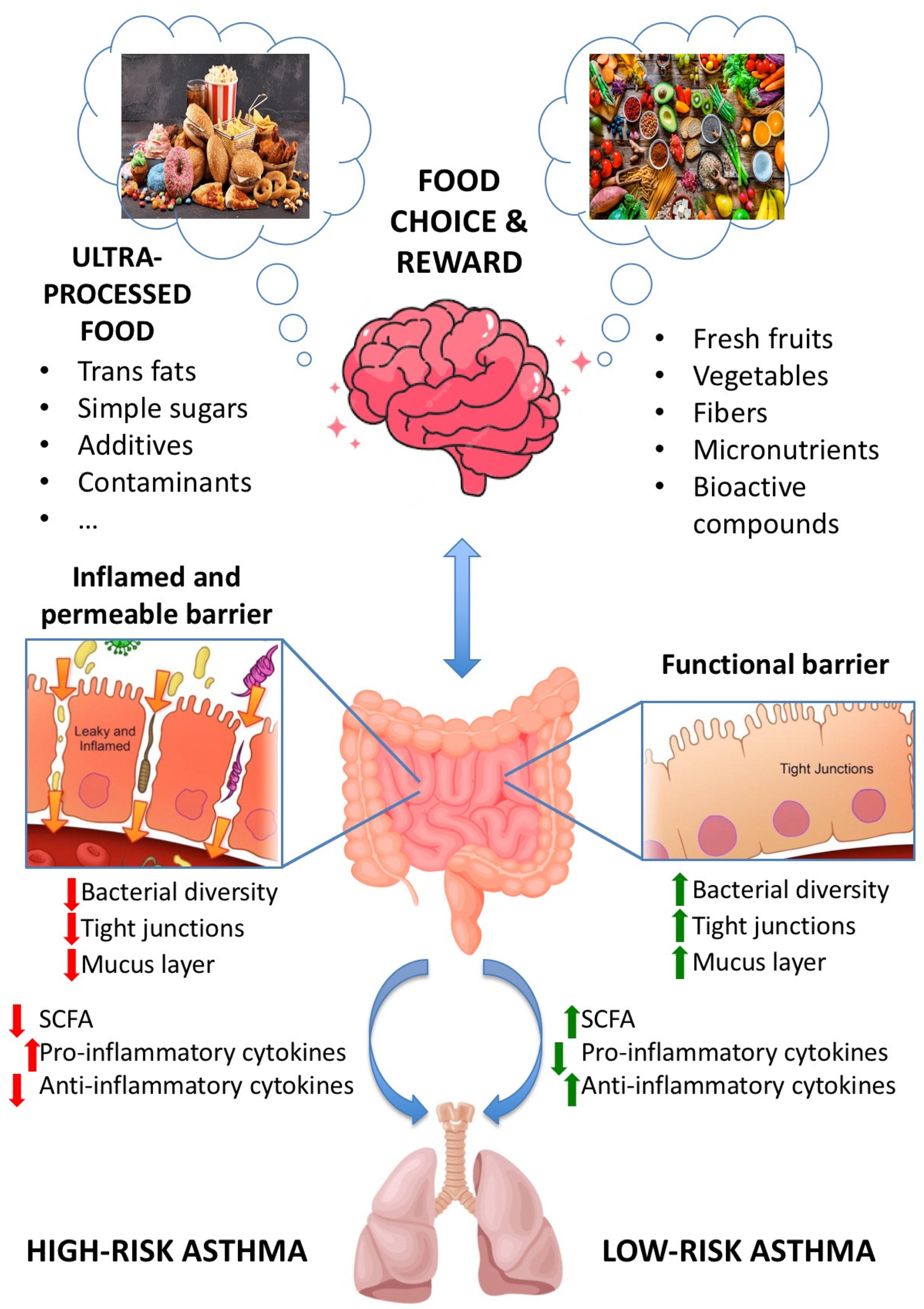In our modern food environment, ultra-processed foods (UPFs) have become increasingly prevalent, accounting for nearly 60% of U.S. adults’ calorie consumption and approximately 70% of American children’s intake. These industrial formulations—ranging from packaged snacks and sodas to frozen pizzas and instant soups—are typically loaded with saturated fat, salt, and sugar while being deficient in fiber, micronutrients, and beneficial phytochemicals. Recent research presented at Nutrition 2025 reveals that the texture of food and subsequent eating speed significantly impact calorie consumption, with potential differences of up to 369 kcal per day depending on these factors. This groundbreaking insight is particularly relevant for those seeking to overcome sugar addiction and implement effective detoxification strategies, as it offers a practical approach to reducing cravings and managing weight without drastic dietary overhaul.

What Are Ultra-Processed Foods and Why Do They Matter?
Understanding the NOVA Classification System
The term “ultra-processed food” was coined by Brazilian epidemiologist Carlos Monteiro in 2009 and popularized through the NOVA classification system, which categorizes foods into four groups based on their degree of processing :
- Group 1: Unprocessed or minimally processed foods (fruits, vegetables, beans, nuts, eggs, meat)
- Group 2: Processed culinary ingredients (sugar, honey, vegetable oils, butter)
- Group 3: Processed foods (canned vegetables, salted nuts, cured meats, cheeses)
- Group 4: Ultra-processed foods (industrial formulations with additives not found in typical kitchens)
UPFs are characterized by their inclusion of ingredients like emulsifiers, colorings, flavor enhancers, bulking agents, and other cosmetic additives . What makes UPFs particularly problematic is their engineered hyperpalatability—scientists working for food manufacturers carefully formulate these products to reach the “bliss point,” the precise combination of sugar, salt, and fat that maximizes palatability and encourages overconsumption .
The Texture Connection
Recent research has revealed that food texture plays a crucial role in UPF consumption patterns. Softer-textured foods are typically consumed at a faster rate, leading to increased calorie intake before satiety signals can activate . One study found that participants consumed 26% more energy (kcal) from soft ultra-processed meals compared to hard minimally processed options . The difference in eating speed between hard and soft textures can be dramatic—up to 85% slower consumption for hard-textured foods .

Health Benefits of Texture-Based Dietary Changes
Weight Management and Metabolic Health
Adopting a diet focused on harder-textured, minimally processed foods offers significant benefits for weight management and metabolic health. Research demonstrates that simply changing food texture to slow eating rate can reduce daily energy intake by 33% (approximately 571 kcal) and food intake by 14% (247 grams) . This reduction occurs naturally, without conscious calorie restriction, because slower eating allows physiological satiety signals to activate before excessive consumption occurs.
The metabolic advantages extend beyond weight management. Studies have linked reduced UPF consumption to:
- Improved insulin sensitivity and reduced type 2 diabetes risk
- Better cardiovascular health markers
- Enhanced gut health through improved microbiome diversity
- Reduced inflammation throughout the body
Sugar Detoxification and Addiction Management
The texture-eating speed connection is particularly valuable for sugar detoxification. Sugar addiction involves compulsive consumption despite negative consequences, with symptoms including cravings, tolerance development, withdrawal symptoms, and binge eating . Research indicates sugar influences brain chemistry similarly to addictive drugs, stimulating dopamine release in the nucleus accumbens—the same brain region implicated in drug addiction .
By focusing on harder-textured foods that require more chewing, individuals can:
- Reduce eating speed: This allows time for satiety signals to register, naturally limiting consumption
- Decrease reward signaling: Slower eating reduces the rapid dopamine spikes that reinforce addictive eating patterns
- Manage cravings: The mechanical process of chewing hard textures provides oral satisfaction that can substitute for sweet sensations

Challenges and Limitations of Reducing UPFs
Nutritional Considerations
While reducing UPF consumption is generally beneficial, some nuanced considerations exist. Certain fortified UPFs provide important nutrients that might be otherwise lacking in modern diets. For example, enriched grains contribute iron and B vitamins that are especially important for women in their reproductive years . Similarly, plant-based milks and meat alternatives provide valuable calcium, vitamin D, and protein sources for those following vegan diets .
Table: Nutrient Considerations When Reducing UPFs
| Nutrient | Common UPF Sources | Whole Food Alternatives |
|---|---|---|
| Calcium | Fortified plant milks, yogurts | Kale, broccoli, sardines, tofu |
| B Vitamins | Enriched cereals, breads | Legumes, nuts, seeds, whole grains |
| Vitamin D | Fortified dairy alternatives | Fatty fish, egg yolks, sunlight |
| Iron | Fortified breakfast cereals | Spinach, lentils, red meat |
Practical Implementation Barriers
Several practical challenges can hinder efforts to reduce UPF consumption:
- Cost and accessibility: Minimally processed foods often cost more and are less accessible in food deserts
- Time constraints: Preparing meals from whole ingredients requires more time and culinary skill
- Social and cultural factors: UPFs are embedded in social traditions and convenience culture
- Shelf stability: Whole foods spoil more quickly, creating logistical challenges

Tips and Trends for Sugar Detox Through Texture Modification
Practical Texture-Based Strategies
- Choose crunchier alternatives: Opt for raw vegetables, whole fruits with skin, nuts, and seeds instead of soft processed snacks
- Incorporate chewing-intensive foods: Include foods that require substantial chewing like lean meats, fibrous vegetables, and whole grains
- Mindful eating practices: consciously slow eating speed by putting utensils down between bites and chewing thoroughly
- Texture combination: Pair softer foods with crunchy elements to increase oral processing time
Emerging Research and Technology
Recent studies have explored innovative approaches to leveraging texture for health:
- AI-powered meal planning: New applications can suggest meals based on texture profiles and eating speed optimization
- Food reformulation: Some manufacturers are developing healthier UPFs with modified textures to slow consumption
- Behavioral tracking: Wearable technology can monitor eating speed and provide real-time feedback
The Role of Food Processing in Modern Diets
It’s important to recognize that not all food processing is inherently harmful. Some processing methods improve safety (pasteurization), accessibility (canning), and nutrient bioavailability (cooking) . The key distinction lies between processing that enhances food quality and ultra-processing that creates hyperpalatable formulations designed to override normal satiety signals.
Table: Spectrum of Food Processing and Health Implications
| Processing Level | Examples | Health Considerations |
|---|---|---|
| Minimal Processing | Washed produce, frozen vegetables | Generally beneficial, preserves nutrients |
| Basic Processing | Canned beans, whole grain bread | Can be healthy with attention to additives |
| Ultra-Processing | Chips, sugary cereals, soda | Associated with negative health outcomes |
| Fortified UPFs | Some breakfast cereals, plant milks | May provide nutrients but often hyperpalatable |

Frequently Asked Questions
Question: How does food texture actually affect how much I eat?
Answer: Food texture influences eating speed (rate of consumption), which directly impacts how many calories you consume before your body’s satiety signals activate. Harder-textured foods require more chewing and slower eating, allowing time for fullness signals to reach your brain. Research shows that people consume 26% fewer calories from hard-textured meals compared to soft-textured ones, even when the nutritional content is similar .
Question: Can I still eat some ultra-processed foods while doing a sugar detox?
Answer: Yes, a balanced approach is often more sustainable than complete elimination. Focus on reducing UPFs overall while paying attention to texture—choose harder-textured UPFs over softer ones when possible. Also, be mindful of added sugars in processed foods and opt for options with minimal sweeteners. Remember that some UPFs like fortified plant milks or whole grain cereals can provide valuable nutrients .
Question: How long does it take to adjust to a less processed diet and notice benefits?
Answer: Initial sugar detox symptoms (like fatigue, irritability, and cravings) typically peak within the first 3-5 days and subside within 2-3 weeks . However, palate recalibration continues over several weeks—by week 4, many people find naturally sweet foods like fruits taste significantly sweeter and more satisfying . Metabolic benefits like improved energy stability and reduced cravings continue to develop over several months of consistent practice.
Question: Are artificial sweeteners a good alternative during sugar detox?
Answer: Most experts recommend avoiding artificial sweeteners during sugar detox because they maintain sweet preference and can perpetuate cravings. As noted by nutritionist Brooke Alpert, “These little pretty colored packets pack such a punch of sweetness, and that’s how our palates get dulled and immune and less reactive to what sweetness really is” . Instead, focus on retraining your palate to appreciate natural flavors.
Question: How can I manage sugar cravings when they feel overwhelming?
Answer: Several strategies can help manage intense cravings: drink water (sometimes thirst masquerades as cravings), consume protein or fiber-rich foods to stabilize blood sugar, engage in brief physical activity or distraction, and ensure adequate sleep . Also, bitter foods like arugula, coffee, or broccoli raab can help reduce sugar cravings by acting on brain receptors that drive sugar intake .

Conclusion
The emerging research on food texture, eating speed, and ultra-processed foods provides powerful insights for anyone seeking to reduce sugar dependence and improve their nutritional health. By understanding how softer-textured UPFs promote rapid consumption and override natural satiety signals, we can make more informed choices that support our health goals. The evidence clearly indicates that simply selecting harder-textured, less processed foods can significantly reduce calorie intake—by up to 369 kcal per day—without conscious restriction .
As we navigate our complex food environment, it’s important to recognize that not all processing is harmful, and some UPFs can play a role in providing essential nutrients . However, prioritizing whole and minimally processed foods with substantial texture offers multiple benefits for sugar detoxification, weight management, and metabolic health. The journey to reduced sugar dependence requires patience and persistence, but the rewards—stable energy, improved health metrics, and freedom from compulsive cravings—are well worth the effort.
We encourage you to experiment with texture-based approaches to eating: try incorporating crunchier foods, slowing your eating pace, and noticing how these changes affect your satisfaction and cravings. Share your experiences in the comments below, and explore more sugar-free recipes and strategies on sugardetoxlab.com. For personalized guidance, consider subscribing to our newsletter or consulting with a registered dietitian who can help you develop a sustainable approach to reducing UPFs and sugar in your life.







